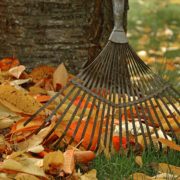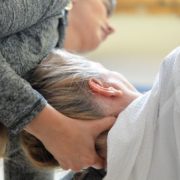Tight Hamstrings: a Case Study
If you’ve ever felt tightness in your hamstrings, the typical advice you get from friends, family, and even well-meaning health and wellness professionals is to stretch them.
Well… if it’s just your hamstring that’s actually tight then this might be good advice to follow.
But what if it’s something else?
If you accidentally stretch a hamstring that feels “tight” due to a back problem – there is a very good chance you’ll make your condition worse.
This exact scenario happened to a recent client of ours (we’ll call him “Jack”) who came to us with what he thought was a “hamstring strain.”
Jack had been stretching and stretching his hamstrings – which he had been told to do by his chiropractor – but he wasn’t feeling any looser. In fact, his hamstring even started to hurt the more he stretched, so he thought maybe he caused himself a strain.
Was he doing too many stretches? Or perhaps doing them incorrectly?
He made the smart decision to call us for help and came in for an examination.
And the first thing we asked him was…
“Where is your pain?”
Jack pointed to the back of his leg, but when he started describing his symptoms… it turned out they actually started in his butt, traveled down the back of his thigh, and stopped at his knee. But on occasion he’d also feel the tightness in his calf. And since doing all that hamstring stretching, he was even starting to feel pain!
Lesson number 1:
Your hamstring starts at your ischial tuberosity – otherwise known as your “sit bone” – and extends down to just below your knee. Since muscles and joints can’t actually refer symptoms (only nerves and sometimes fascia can do that), feeling pain or tightness anywhere other than your actual hamstring is the very first clue you could be dealing with something other than a hamstring problem.
Since Jack was feeling symptoms in his butt and also down into his calf, we knew immediately that “hamstring strain” was NOT Jack’s problem.
The next step was to figure out where his tightness was coming from.
Lesson number 2:
Since he’d been stretching for several weeks already and was starting to feel more problems in his leg – the likely explanation was that it was coming from his back.
While yesm over-stretching can make you sore, and yes, stretching incorrectly can cause you discomfort… that wasn’t the case with Jack. He was still feeling tight, and now on top of that he was dealing with pain.
All signs were pointing to a problem in his back.
Well now that we had our theory – it was time to test it!
After performing several movement tests with Jack’s back, we were able to produce the exact same tightness AND pain he had been feeling in his leg. And with some different movement tests we were actually able to ELIMINATE his symptoms temporarily.
Since moving his spine in certain directions was responsible for both turning “on” AND turning “off” his leg symptoms, we were able to confirm that he had a back problem – not a hamstring problem.
Pretty cool – right?
Jack thought so… but more importantly… he was glad to finally have some answers! Finally, he had a plan to move forward.
- He stopped stretching his hamstring.
- He started doing a different – and properly prescribed movement instead – that was designed to eliminate the symptoms in his leg.
We’ll of course need to continue working with Jack to make sure that his leg symptoms not only go away – but that they stay gone. Part of the process will be teaching Jack how to do this on his own in case the problem ever comes back again.
Sadly, I can’t tell you how many times I’ve seen a case like Jack’s in my office.
Lucky for Jack, he came to us early on – when his symptoms were mild. Basically, the nerves in Jack’s spine were starting to get irritated, and the result was a “tight” feeling in his hamstring. Nerves don’t like to be stretched, so Jack was actually making his problem worse by stretching and he didn’t even know it. Had he not gotten this addressed – the tightness in his leg could have progressed into full blown sciatica!
If you have any kind of ache or pain that isn’t going away on it’s own with natural movement or stretching – don’t try to figure it out on your own.
And as you learned from Jack’s case – not all movements are created equal. It’s possible you could look up a stretch on Google or YouTube and actually make yourself worse!
Don’t guess… TEST 🙂
And when it comes to pain during movement or certain activities – let the movement experts be the ones to test you and figure it out. All you have to do is click here to schedule a FREE, no-obligation consultation with one of our specialists! These Discovery Sessions are your chance to determine where your pain, tightness, or stiffness may be coming from and if we’re the right people to help fix it.





